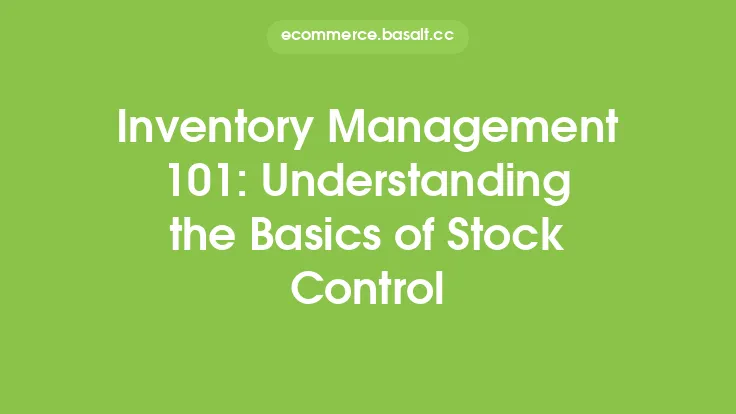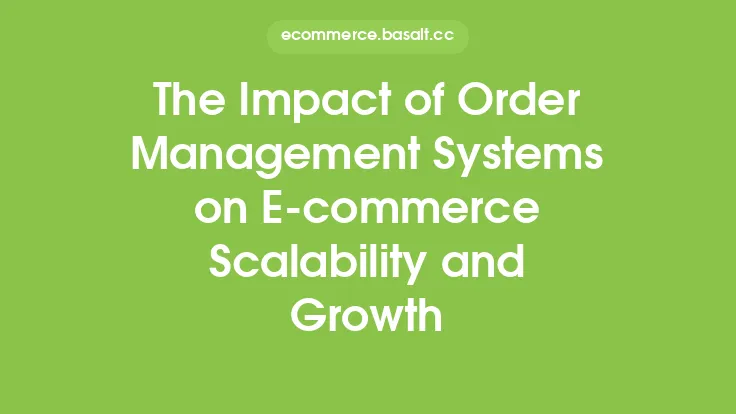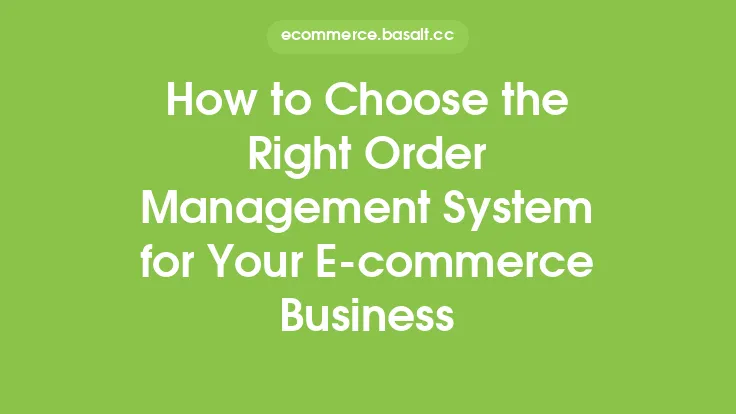In the realm of e-commerce, managing orders efficiently is crucial for businesses to thrive. An order management system (OMS) is a software solution that enables companies to streamline their order processing, from receipt to fulfillment. With various types of OMS available, it's essential to understand the differences between them to make an informed decision. In this article, we'll delve into the distinct types of order management systems, their characteristics, and the benefits they offer.
Cloud-Based Order Management Systems
Cloud-based OMS are hosted on remote servers and can be accessed through the internet. This type of system offers scalability, flexibility, and cost-effectiveness. Cloud-based OMS providers manage the infrastructure, maintenance, and updates, allowing businesses to focus on their core operations. Key benefits of cloud-based OMS include:
- Reduced upfront costs
- Automatic software updates
- Enhanced collaboration and accessibility
- Scalability to accommodate growing businesses
- Integration with other cloud-based e-commerce solutions
On-Premise Order Management Systems
On-premise OMS are installed and hosted on a company's local servers. This type of system provides complete control over the infrastructure and data, making it suitable for businesses with complex or customized order management requirements. On-premise OMS offer:
- Total control over system configuration and customization
- Enhanced security and data protection
- Integration with existing on-premise systems and infrastructure
- Potential for lower long-term costs
- However, on-premise OMS often require significant upfront investments and ongoing maintenance costs.
Hybrid Order Management Systems
Hybrid OMS combine the benefits of cloud-based and on-premise systems. This type of system allows businesses to host certain components on-premise while leveraging cloud-based services for other aspects of order management. Hybrid OMS offer:
- Flexibility in deployment and configuration
- Scalability and cost-effectiveness
- Enhanced security and control over sensitive data
- Integration with both cloud-based and on-premise systems
- Potential for reduced upfront costs and ongoing maintenance expenses
Open-Source Order Management Systems
Open-source OMS are software solutions with publicly available source code, allowing businesses to modify and customize the system to meet their specific needs. Open-source OMS offer:
- Zero or low upfront costs
- Community-driven development and support
- High degree of customization and flexibility
- Potential for reduced ongoing costs
- However, open-source OMS often require significant technical expertise and resources for implementation and maintenance.
Proprietary Order Management Systems
Proprietary OMS are software solutions developed and owned by a specific company. This type of system is often tailored to meet the needs of a particular industry or business model. Proprietary OMS offer:
- Customized solutions for specific business requirements
- Ongoing support and maintenance from the vendor
- Potential for enhanced security and data protection
- Integration with other proprietary systems and solutions
- However, proprietary OMS can be expensive, and businesses may be locked into a specific vendor or system.
Distributed Order Management Systems
Distributed OMS are designed to manage orders across multiple channels, locations, and systems. This type of system enables businesses to optimize their order fulfillment processes, reduce costs, and improve customer satisfaction. Distributed OMS offer:
- Real-time inventory visibility and management
- Automated order routing and fulfillment
- Enhanced customer experience through seamless order tracking and updates
- Improved supply chain efficiency and reduced costs
- Potential for increased sales and revenue through optimized order management
Mobile Order Management Systems
Mobile OMS are designed to manage orders on-the-go, using mobile devices such as smartphones or tablets. This type of system enables businesses to streamline their order management processes, improve customer satisfaction, and increase sales. Mobile OMS offer:
- Real-time order management and tracking
- Enhanced customer experience through mobile ordering and payment options
- Improved supply chain efficiency and reduced costs
- Potential for increased sales and revenue through optimized order management
- Integration with other mobile-based e-commerce solutions and systems.
In conclusion, the type of order management system a business chooses depends on its specific needs, industry, and growth stage. By understanding the characteristics and benefits of different OMS types, companies can make informed decisions and select the system that best aligns with their goals and objectives. Whether it's a cloud-based, on-premise, hybrid, open-source, proprietary, distributed, or mobile OMS, the right system can help businesses streamline their order management processes, improve customer satisfaction, and drive growth and revenue.





